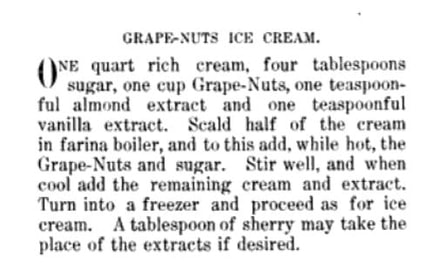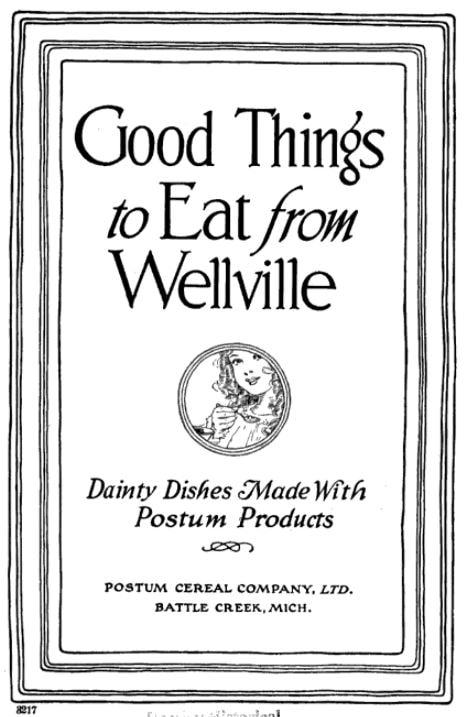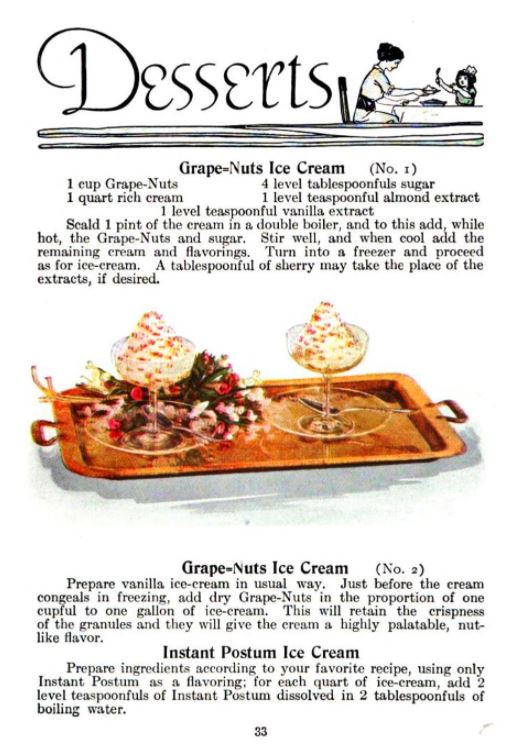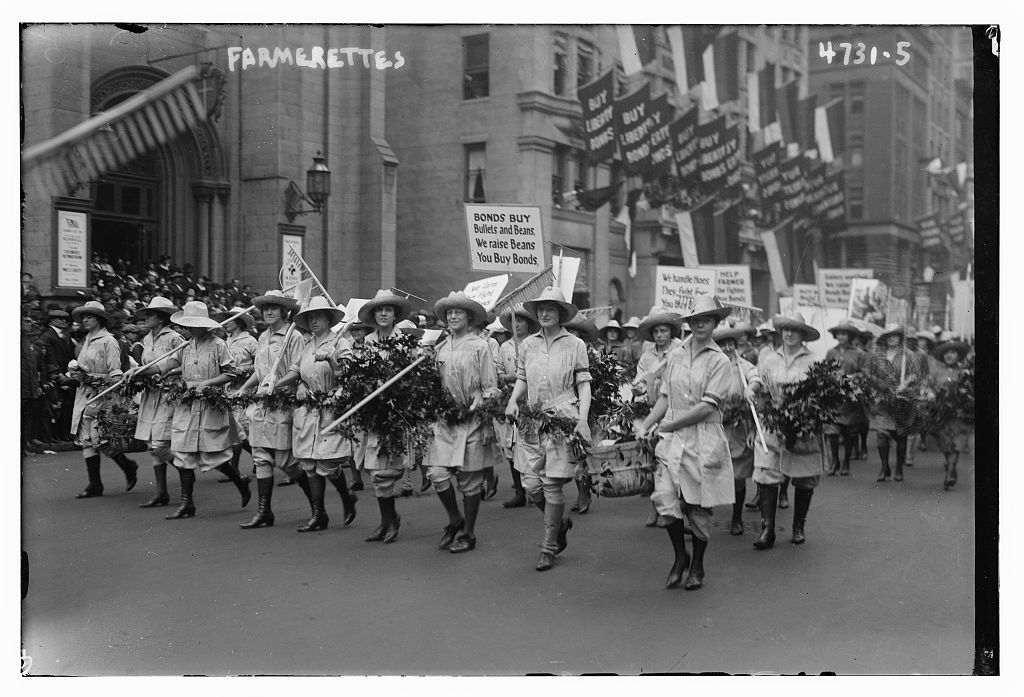|
Thanks to everyone who joined us for Food History Happy Hour! This week we make the super retro, somewhat disgusting, Beef Fizz. We talk about the history of the Beef Fizz, including the history of consomme, the taste of Beef Fizz and why it's more appropriate for puppies, some background on the history and terminology of the word "cocktail" and its role as a first course, hot cocktails, a cameo by Sweetie Pie (who LOVED the Beef Fizz), tiki bars and cultural appropriation, Teddy Roosevelt and American colonialism in the Philippines and Polynesia, destructive ideas about Indigenous women and sexuality, Hawaiian and Pacific Foods (1940) cookbook, "it's safe to be hungry" in reference to electric and gas stoves, and foraging between the two World Wars, Nature's Garden for Victory and Peace (1942) by George Washington Carver, historic hunting, venison, and the modern deer population, the same with Canada geese, ecological carrying capacity, roadkill and historic consumption of wild meats, and Lent and what constitutes "meat."
Beef Fizz (1960s?)
So some Food Historian friends and patrons ALL tagged me in this social media post (below) with the recipe for Beef Fizz. It's been going around the interwebs for a while, so I'm definitely not the only one to make this on film. However, I couldn't track down what cookbook it was from.
A 1968 Campbell's cookbook DOES have a recipe for "Beef Fizz," but theirs calls for club soda, not ginger ale. So if anyone is able to find the original cookbook below, please let me know!
2 cans condensed beef broth
1 cup chilled ginger ale 2 tablespoons lemon juice Combine ingredients and pour over ice in glasses. 6 to 8 servings. Of course, as I mentioned in the video, I did not want to have 8 servings of this stuff, so I cut the recipe in half: 1 can Campbell's beef consomme 1/2 cup chilled ginger ale 1 tablespoon lemon juice (bottled) Poured over ice. Not as bad as I expected, but do not recommend. Think of it as cold soup, and it's sort of drinkable. Sort of. Now for the roundup of links!
A little sparse this week, but that's because there are more links up above! Happy reading.
If you liked this post and would like to support more Food History Happy Hour livestreams, please consider becoming a member or joining us on Patreon. Members and patrons get special perks like access to members-only content.
4 Comments
It's Juneteenth! Thanks to everyone who joined us for Food History Happy Hour. This week we make the Rose in June cocktail from the 1917 "Recipes for Mixed Drinks." We discussed Juneteenth, red velvet cake, victory gardens including propaganda and the exclusion of Black farmers and imprisoned Japanese Americans, the role of visuals in influencing taste, Black Food Historians You Should Know, disparities in book contracts, hot weather foods, salads, summer kitchens, how historical peoples coped without air conditioning, how historical peoples kept foods cold before refrigeration, ice and ice cream in the ancient world, rural electrification and electric refrigerators, the Frigidaire Cookbook, icebox pie, racial stereotypes in food advertising, including the history of the "Aunt" and "Uncle" terms, including Uncle Ben and Aunt Jemima, the history of the mammy trope, the tragedy of child caring roles, What Mrs. Fisher Knows About Old Southern Cooking, Black children in advertising, Franchise: the Golden Arches in Black America, the forthcoming book scanner I ordered, monuments and statues, and we ended with a signal boost for the James Hemings Society.
Rose in June Fizz (1917)
The "Rose in June" cocktail comes from the "Fizz" section of Recipes for Mixed Drinks by Hugo Ensslin (1917).
The original recipe calls for: Juice of 1 orange Juice of 2 limes 1 jigger raspberry syrup 1 jigger gin Shake well in a mixing glass (or cocktail shaker) with cracked ice, strain into Collins glass and fizz with sparkling water OR - if you don't have fresh citrus fruits OR raspberry syrup - you can substitute 1/3 cup orange juice, 1/4 cup lime juice, a heaping tablespoon of raspberry (or in my case, strawberry) jam, and the gin. Very nice, very refreshing, but sadly NOT pink.
Here's a roundup of links related to everything we talked about (in addition to all the links above!):
If you liked this post and would like to support more Food History Happy Hour livestreams, please consider becoming a member or joining us on Patreon. Members and patrons get special perks like access to members-only content.
Thanks to everyone who joined in this weeks' Food History Happy Hour! In this episode we made the Guadalcanal Cocktail and discussed rhubarb, abolitionist boycott of sugar and the slave trade, rhubarb recipes and all the animals who are eating my rhubarb, breakfast cereals, in particular GrapeNuts and the real story GrapeNuts ice cream (and its predecessor GrapeNuts pudding), graham flour and graham pudding, Kellogg v. Post cereals (as seen on The Food That Built America), including the history of Granula, the accident of corn flakes, C.W. Post and the California Fig Nut Company, sugary breakfast cereals in the 1950s and on, shredded wheat, the Victorian interest in grain-based products with milk on top, Wheatina, frog eye salad, Cool Whip, rural v. urban breakfast trends, food deserts, housing policy and suburbs, TV and dinners, the addictiveness of sugar, the food pyramid, the history of lunch, including nuncheon, and the introduction of fellow food historian Niel De Marino, who specializes in 18th century foodways and runs The Georgian Kitchen, Russian/Georgian food and cookbooks, Black Panthers, and the reaction to the film "Birth of a Nation."
With a cameo by Sweetie Pie, of course! And I believe this was our longest and most lively Food History Happy Hour yet! Guadalcanal Cocktail
1 jigger bourbon (Old Crow is most accurate)
2-3 ice cubes unsweetened grapefruit juice In an old fashioned glass, pour jigger of bourbon over ice. Fill with grapefruit juice and stir. The REAL Story of Grape Nuts Ice Cream
Well as you may know I get a lot of media requests, so one on the origin of Grape Nuts ice cream was fun to research, even if the request was VERY last-minute. Sadly, my commentary on the history did not make the cut of the rather frivolous radio spot (annoying, considering how much work I put into it, all free of charge), but it DID result in some fun research on Grape Nuts ice cream, which was, sadly, NOT invented by Hannah Young in Wolfville, Nova Scotia in 1919, as many people, including her grandson Paul, have claimed. Or at least, Hannah may have come up with the combination independently (although I doubt that could ever be verified), and likely had a hand in popularizing it in Nova Scotia, but I've found references that predate Young by at least 10 years.
This reference, from the American Housekeeper Advertiser dates to 1909 and is the earliest published reference I could find.
Of course, in 1916, the Post company published, "Good Things to Eat From Wellville."
The first recipe listed in "Good Things to Eat" is very similar to the one from the American Housekeeper Advertiser, but the second is simply vanilla ice cream with Grape Nuts folded in. Also notice with "coffee" flavored Postum ice cream! The cookbook also includes Post Toasties ice cream and several other confection recipes using the cereals. And of course, all these recipes predate the 1919 Hannah Young story.
At any rate - it was a fun research project and I'm glad I was able to add to the historiography of Grape Nuts Ice Cream.
Here's a flurry of other links related to tonight's talk!
If you liked this post and would like to support more Food History Happy Hour livestreams, please consider becoming a member or joining us on Patreon. Members and patrons get special perks like access to members-only content.
Many thanks to the Southeastern New York Library Resources Council for hosting my talk and for recording it! Much (but certainly not all!) of the research I've done for my book is presented in condensed form here. I think it turned out very nicely indeed and I am now contemplating recording more of my talks for sharing online. What do you think? Should I?
Here is some further reading based on some of the topics I discussed in the talk:
Capozzola, Christopher. Uncle Sam Wants You: World War I and the Making of the Modern Eighmey, Rae Katherine. Food Will Win the War: Minnesota Crops, Cooks, and Conservation during World War I. St. Paul, MN: Minnesota Historical Society Press, 2010. Gowdy-Wygant, Cecilia. Cultivating Victory: The Women's Land Army and the Victory Garden Movement. Pittsburgh, PA: University of Pittsburgh Press, 2013. Hall, Tom G. “Wilson and the Food Crisis: Agricultural Price Control during World War I.” Agricultural History 47, no. 1 (1973): 25-46. Hayden-Smith, Rose. Sowing the Seeds of Victory: American Gardening Programs of World War I. Jefferson, NC: McFarlan and Company, Inc., 2014. Veit, Helen Zoe. Modern Food, Moral Food: Self-Control, Science, and the Rise of Modern American Eating in the Early Twentieth Century. Chapel Hill, NC: University of North Carolina Press, 2013. Weiss, Elaine F. Fruits of Victory: The Woman’s Land Army of America in the Great War. Washington, D.C: Potomac Books, 2008.
If you or your organization would like to host a talk - virtual or otherwise - please make a request!
This post was supported in part by Food Historian members and patrons! If you liked this post, please consider becoming a member or joining us on Patreon. Members and patrons get special perks like access to members-only content. |
AuthorSarah Wassberg Johnson has an MA in Public History from the University at Albany and studies early 20th century food history. Archives
July 2024
Categories
All
|








 RSS Feed
RSS Feed